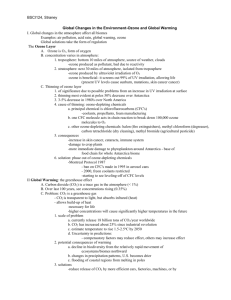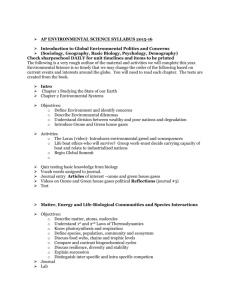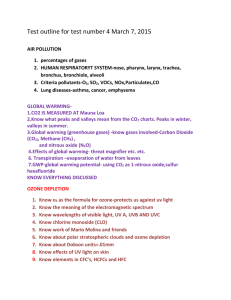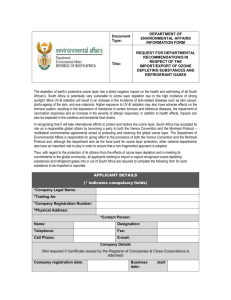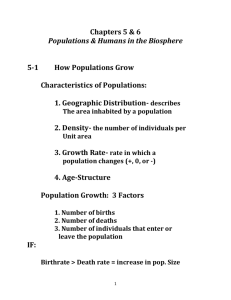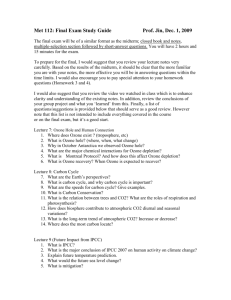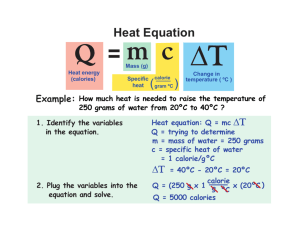Lecture 23-Biodiversity and Species Extinction
advertisement
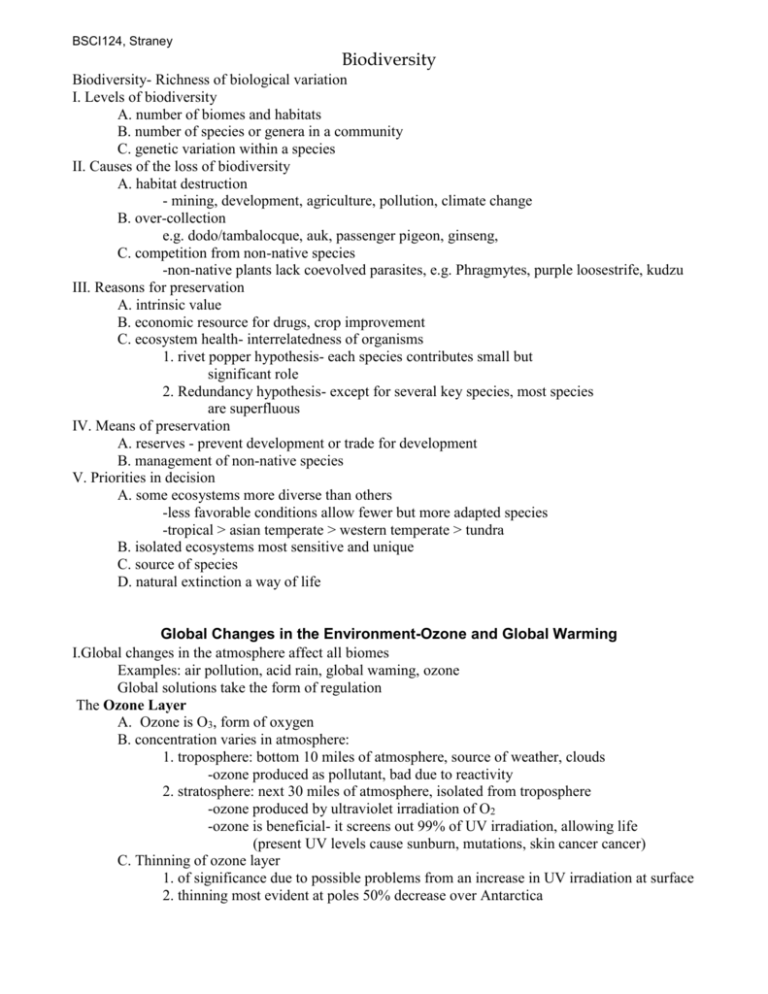
BSCI124, Straney Biodiversity Biodiversity- Richness of biological variation I. Levels of biodiversity A. number of biomes and habitats B. number of species or genera in a community C. genetic variation within a species II. Causes of the loss of biodiversity A. habitat destruction - mining, development, agriculture, pollution, climate change B. over-collection e.g. dodo/tambalocque, auk, passenger pigeon, ginseng, C. competition from non-native species -non-native plants lack coevolved parasites, e.g. Phragmytes, purple loosestrife, kudzu III. Reasons for preservation A. intrinsic value B. economic resource for drugs, crop improvement C. ecosystem health- interrelatedness of organisms 1. rivet popper hypothesis- each species contributes small but significant role 2. Redundancy hypothesis- except for several key species, most species are superfluous IV. Means of preservation A. reserves - prevent development or trade for development B. management of non-native species V. Priorities in decision A. some ecosystems more diverse than others -less favorable conditions allow fewer but more adapted species -tropical > asian temperate > western temperate > tundra B. isolated ecosystems most sensitive and unique C. source of species D. natural extinction a way of life Global Changes in the Environment-Ozone and Global Warming I.Global changes in the atmosphere affect all biomes Examples: air pollution, acid rain, global waming, ozone Global solutions take the form of regulation The Ozone Layer A. Ozone is O3, form of oxygen B. concentration varies in atmosphere: 1. troposphere: bottom 10 miles of atmosphere, source of weather, clouds -ozone produced as pollutant, bad due to reactivity 2. stratosphere: next 30 miles of atmosphere, isolated from troposphere -ozone produced by ultraviolet irradiation of O2 -ozone is beneficial- it screens out 99% of UV irradiation, allowing life (present UV levels cause sunburn, mutations, skin cancer cancer) C. Thinning of ozone layer 1. of significance due to possible problems from an increase in UV irradiation at surface 2. thinning most evident at poles 50% decrease over Antarctica 3. 3-5% decrease in 1980's over North America 4. cause of thinning: ozone-depleting chemicals a. principal chemical is chlorofluorocarbons (CFC's) -coolants, propellants, foam manufacturing b. one CFC molecule acts in chain reaction to break down 100,000 ozone molecules to O2 c. other ozone-depleting chemicals: halon (fire extinguishers), methyl chloroform (degreaser), carbon tetrachloride (dry cleaning), methyl bromide (agricultural pesticide) 5. consequences -increase in skin cancer, cataracts, immune system -damage to crop plants -more immediate damage to phytoplankton around Antarctica - base of food chain for whole Antarctica biome 6. solution: phase out of ozone-depleting chemicals -Montreal Protocol 1987 - ban on CFC's made in 1995 in aerosol cans - 2000, freon coolants restricted -starting to see leveling-off of CFC levels II Global Warming: the greenhouse effect A. Carbon dioxide (CO2) is a trace gas in the atmosphere (< 1%) B. Over last 100 years, see concentrations rising (0.35%) C. Problem: CO2 is a greenhouse gas - CO2 is transparent to light, but absorbs infrared (heat) - allows build-up of heat -necessary for life -higher concentrations will cause significantly higher temperatures in the future 1. scale of problem a. currently release 18 billion tons of CO2/year worldwide b. CO2 has increased about 25% since industrial revolution c. estimate temperature to rise 1.5-2.5oC by 2050 d. Uncertainty in predictions: - compensatory factors may reduce effect, others may increase effect 2. potential consequences of warming a. decline in biodiversity from the relatively rapid movement of ecosystems/biomes northward b. changes in precipitation patterns, U.S. becomes drier c. flooding of coastal regions from melting in poles 3. solutions -reduce release of CO2 by more efficient cars, factories, machines, or by lowering standard of living -1992 U.N. conference -reduce emissions of other greenhouse gasses (methane, CFC's, nitrous oxides) -1997 Kyoto conferencefinal proposal to set 5% below 1990 levels -March 2001 President Bush "I oppose the Kyoto Protocol because it exempts 80 per cent of the world, including major population centers such as China and India, from compliance, and would cause serious harm to the US economy." -Dec 2002 – postpone any regulation for a decade of further study
